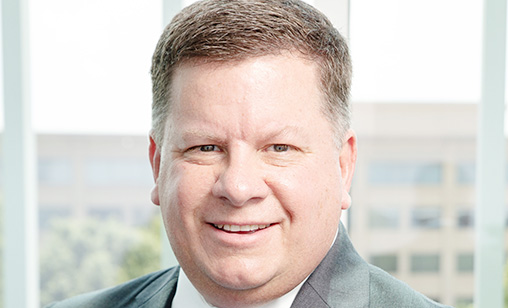Special Report: Training
Demand surge for cockpit crew post pandemic
Boeing’s pilot and technician forecast to 2040 urges accelerated efforts to recruit new pilots and technicians to the industry as the pandemic recovery gathers speed. Associate editor and chief correspondent, Tom Ballantyne, reports.
April 1st 2022
While the recent industry downturn has resulted in a temporary oversupply of qualified pilots and engineers, long-term demand for qualified crew and skilled technical support remains robust, Boeing vice president of Commercial Training Solutions for Global Services, Chris Broom, told Orient Aviation last month. Read More »
“Pre COVID-19, a shortfall of qualified pilots and maintenance technicians was anticipated because of a coming wave of mandatory retirements at airlines,” he said. “But analysis of new licenses and certificates issued in the last few years indicated new crew entering the airline industry was lagging demand.
 |
| 'Our outlook forecasts the Asia-Pacific, including China, will require nearly 820,000 new aviation personnel, including more than 230,000 pilots, nearly 250,000 technicians and 340,000 cabin crew in the next 20 years' |
| Chris Broom Boeing Commercial Training Solutions for Global Services vice president |
“A shortfall may still happen if the industry does not adequately recruit and train enough new pilots and engineers.”
The pandemic has deeply impacted the aviation industry, but pilot training requirements have remained consistent. “During the early days of the pandemic, there was a decrease in training at our global campuses due to the impact of the pandemic on our customers,” Broom said.
As the aviation industry recovers worldwide and Southeast Asia prioritizes growth, airlines in the region should ensure they have adequate qualified pilots to fly their routes, he said.
Already, the commercial airline training division of Boeing was witnessing a near-term increase in demand for training in Southeast Asia as pilots and technicians transition to new aircraft types, maintain certifications and return from pandemic-related pauses in active service.
Broom added: “The aviation industry has proven resilient time and again as it withstood major external and macroeconomic shocks. This is driven by global commerce, people’s desire to travel, visit family and friends, explore the world and build relationships.’’
The 2021 Pilot and Technician Outlook is based on Boeing’s analysis of long-term market demand, fleet growth, aircraft utilization, attrition rates and regional differences in crewing specific to aircraft types.
“The numbers reported in the Pilot & Technician Outlook represent demand only. Since the total supply of personnel available to fill this demand is not reported, Boeing is unable to accurately assess potential supply of available cockpit crew and technicians to fill demand,’’ Broom said.
What has not changed, Broom said, is the drive to improve training. “We partner with airlines to develop innovative training solutions to improve learning efficacy, offer tailored learning flexibility and enhance overall aviation safety. We defer to our customers to share their specific needs,” he said.
“Boeing is designing, developing and deploying competency-based training and assessment curricula focused on holistic training rather than a prescriptive, task-based syllabus. A competency-based approach prepares resilient pilots with a combination of skills, knowledge, attitudes and values required to perform flight operations tasks to prescribed standards allowing them to quickly recover in the face of challenges.”
“Boeing is integrating advanced analytics and technology into training programs with the goals of better prepared pilots and enhanced industry safety.”
Boeing is a major presence in the Asia-Pacific in airline training. It’s Commercial Training Solutions Singapore Campus is the company’s largest aviation training facility in Asia. It has six simulators and five flight training devices to support training on various aircraft types including three full-flight simulators (FFS) for the B787-9, one B777-300ER FFS, one B737NG FFS and one B737-8 MAX FFS. There is team of technicians offering 24/7 support. It works with more than 14 regulators to ensure compliance across many customer jurisdictions. The facility also is equipped for maintenance training, including training personnel in the care and maintenance of composite airplane material in its Composite Structures Lab. At its Shanghai campus, Boeing provides training solutions for pilots, maintenance teams and cabin crew to Chinese airline customers and the region. The Campus is steadily expanding its training courses since it opened in September 2009. It now has four FFS: one B737 MAX FFS operating from 2017, one B737 NG FFS installed at the centre in 2015, one B787 FFS and one B757/767 FFS. |
Bills Sarah says:
November 21st 2023 11:30am